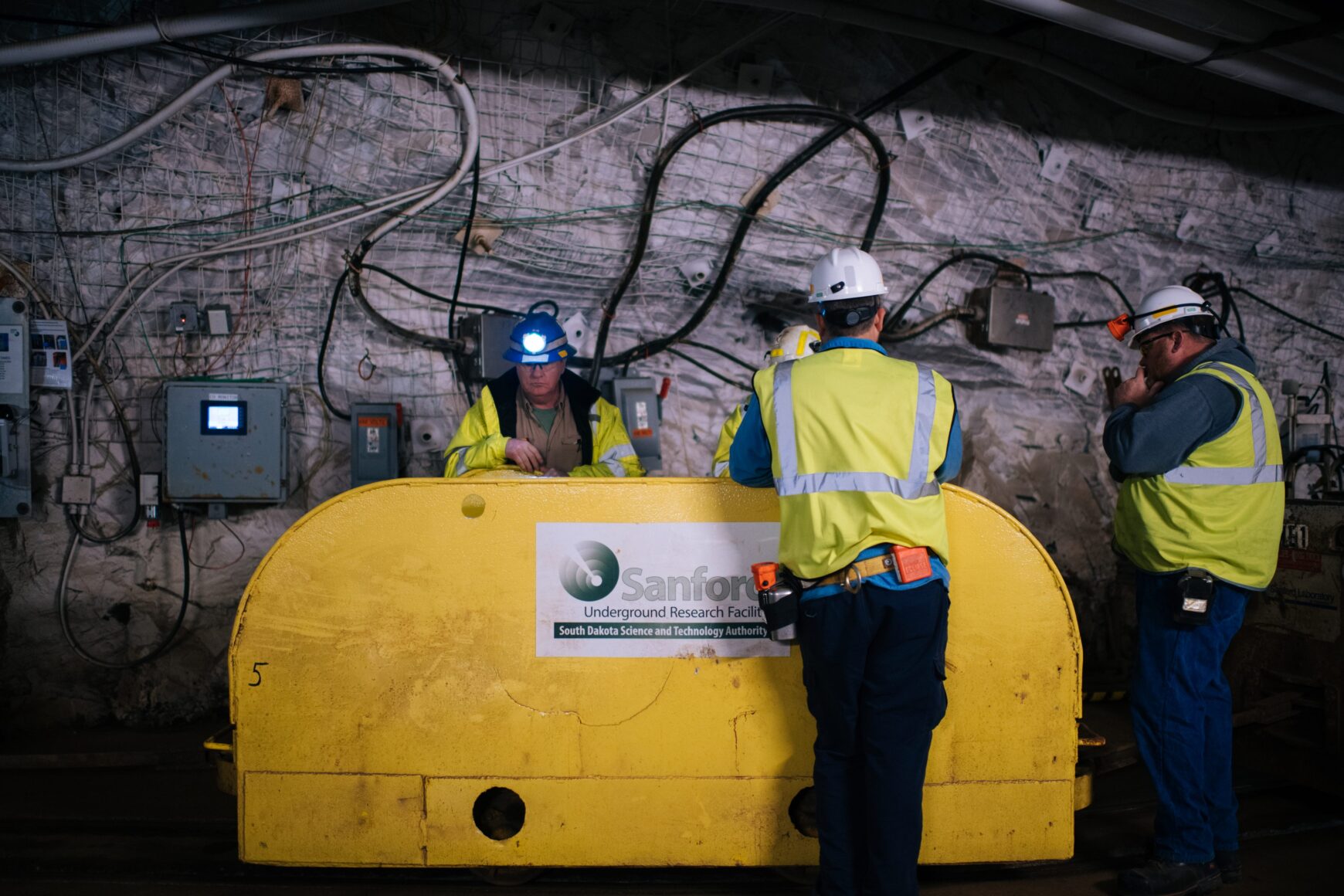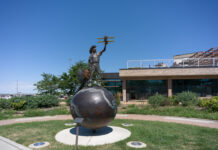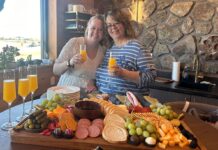“You don’t know what you don’t know.”
The Homestake Mine in Lead delved deep underground for gold until its closure in 2002, which made a huge impact in the community. Homestake was the largest and deepest gold mine in North America, producing approximately 41 million ounces of gold in its 126-year lifetime.

In 2006, the mine became a dedicated underground research facility where scientists probe the depths of space to learn more about our place in the universe.
When 605 was invited for a once-in-a-lifetime experience to go down into what is now the Sanford Underground Research Facility (i.e. Facebook CEO Mark Zuckerberg is one of the more famous people who have gone underground), the team jumped at the chance to see what scientists from all over the globe are working on.
Checking In
605 worked closely with Sanford Lab communications director Constance Walter for scheduling and the tour itself. Tours must be planned by the minute, as the scientists and staff members’ times are extremely valuable, to see as much as possible, and to make the times for the Yates Shaft (we’ll get more into that).
Our team arrived at the surface-level building at 6:30 a.m., and we began in a conference room with a safety briefing that included two videos. Safety is (obviously) huge at the Sanford Lab. We then learned more about why world-leading science experiments, like the search for dark matter, are happening in the small town of Lead, and why they’re taking place a mile underground.
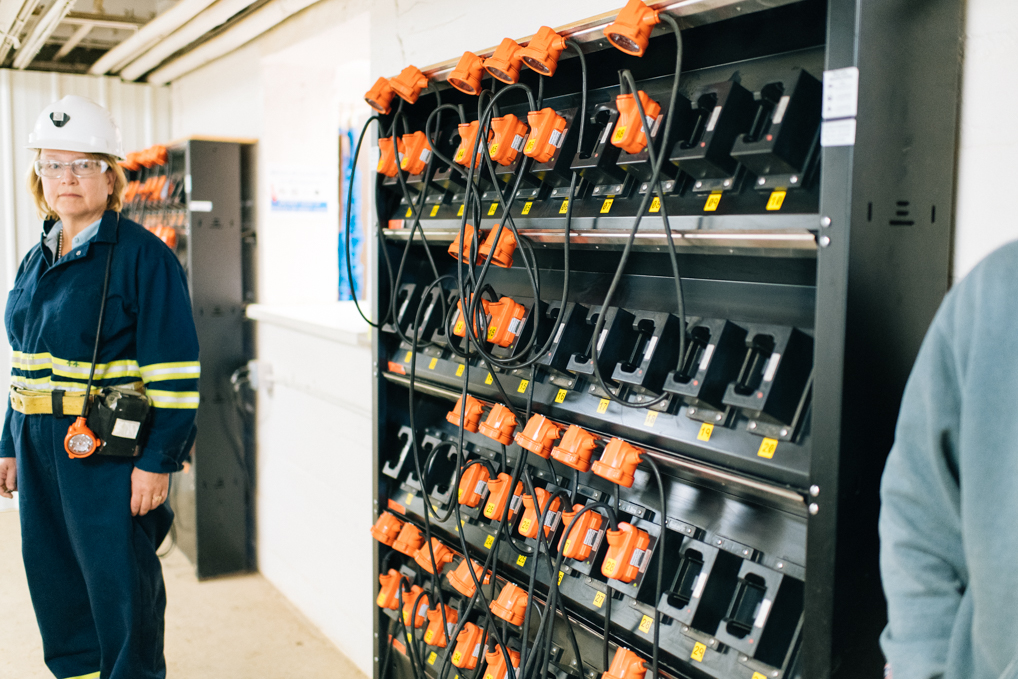
The facility’s depth, rock stability, and history make it ideal for sensitive experiments that need to escape cosmic rays.
“We know there’s a lot of mass and matter missing in the universe. We only know five percent of the universe. That means 95 percent is unknown, and humans are not happy with not knowing.” -Horn
After the videos were over and we signed our lives away via forms, we were brought to the PPE room (which stands for personal protective equipment), and were given gear that included a hard hat with a cap lamp, safety glasses, and a W-65 self-rescuer.

Running a few minutes behind, Constance led us down a hall and was telling us to hurry so we could “brass in.” Anyone who goes down below must brass in when they enter and “brass out” when they return to the surface. This is a remnant from the mining days that allows staff to keep track of who is underground and who has returned.
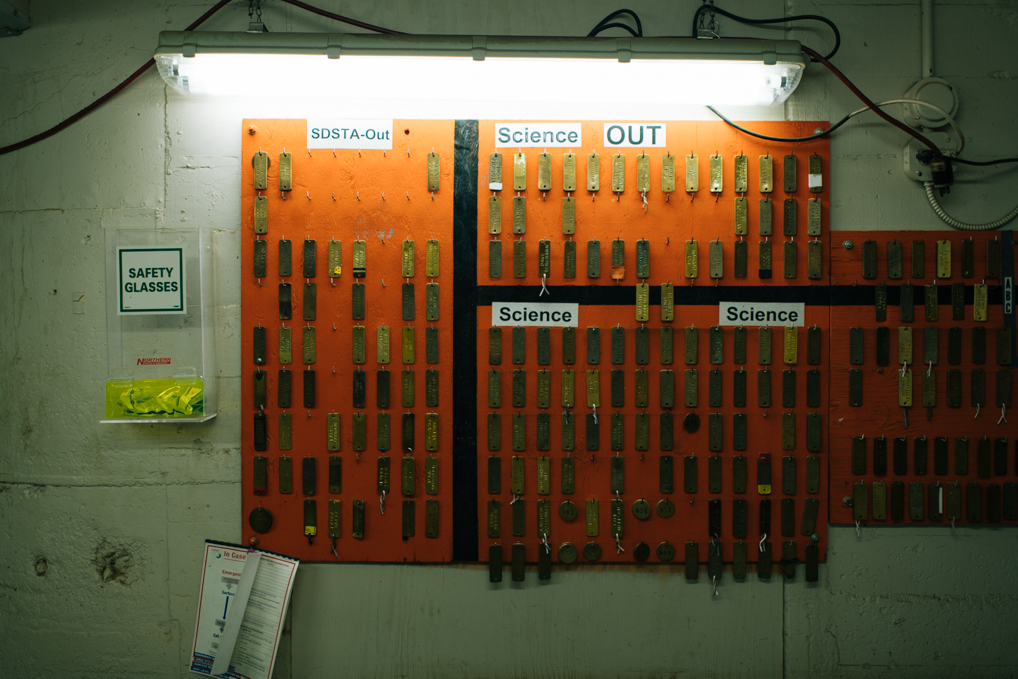
We would be lying if we didn’t say we were nervous at this point.
Signing our names and placing our brass tags in our pockets, we headed to the Yates Shaft, which is a cage from mining days that takes workers down underground in a 12 minute ride.
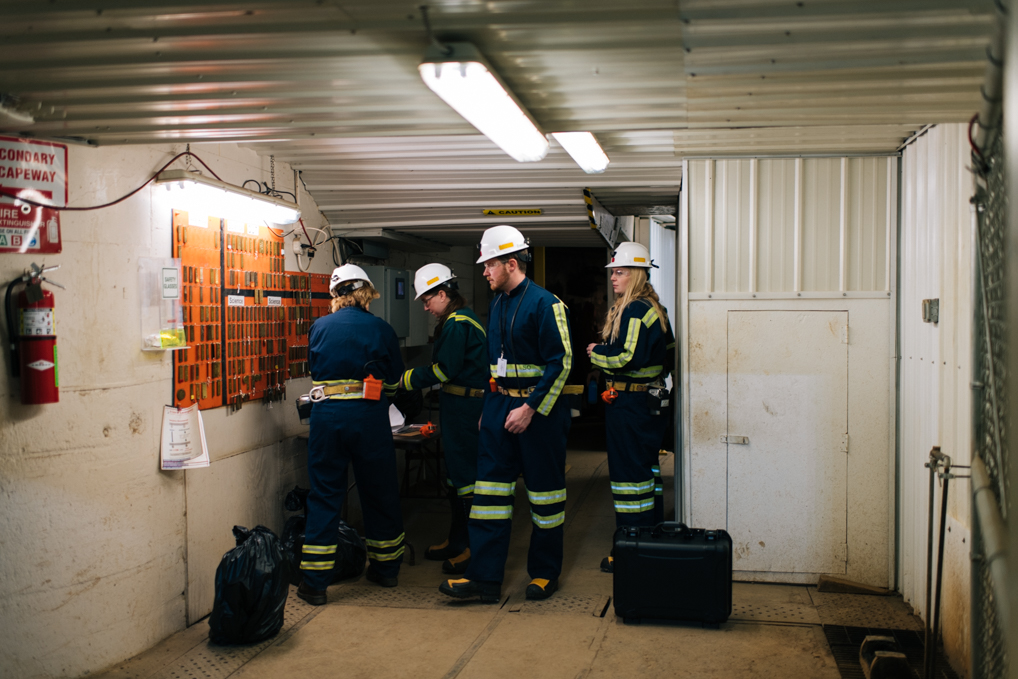
There are only a handful of Yates Shaft rides a day, and being that we were doing a half-day tour, it went down at 7:30 a.m. sharp and we were riding back up at 11:45 a.m.
“What if you’re late or miss it?” we asked.
“You don’t want to miss it,” said Walter. “The cage waits for no one.”
Since there are limited rides down, around 20 of us squeezed into the cage straight out of the late 1930s. Water dripped down on our heads as we stood shoulder to shoulder. As it’s a cage, we could see the rocky ground as we passed different levels. And waited. And waited to arrive.

The “gateway to the 4850 level” is operated by the hoist room on the surface, which is also originally from Homestake mining days. Walter says many current hoist room operators were former Homestake employees.

“When this reopened as a science facility, the number of people who wanted to come back and work here [from Homestake] was incredible. It was a way to come home,” she said. “And really, we couldn’t do it without their expertise and knowledge.”
The Gear
Here is what 605 geared up in:
- Hard hat
- Cap lamp
- W-65 self-rescuer
(used to filter Carbon Monoxide in the event of a fire) - Coveralls
- Hard-toe shoes
Safety First
The cage opened, and everyone herded out 4,850 feet below ground. What we saw was incredible. Several steps in, you could see tunnels and the “man car” (or what Walter calls the “people car” nowadays).
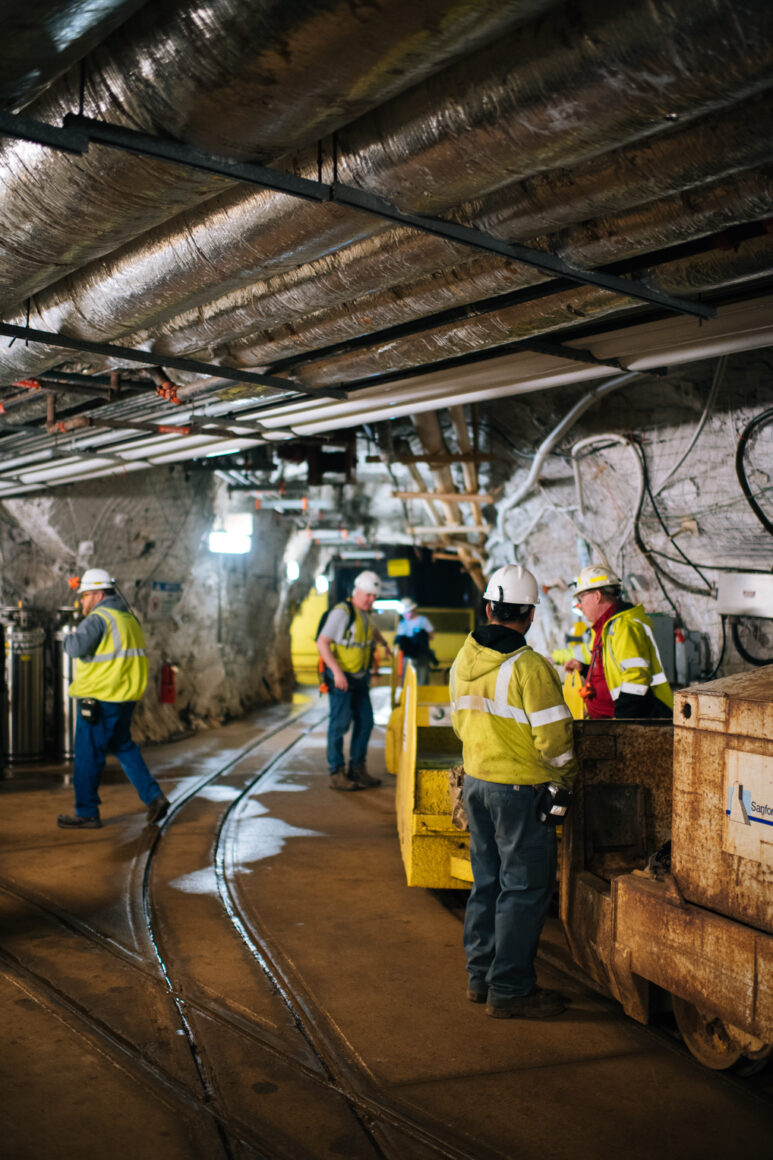
We were also joined by June Apaza, who leads the K-12 education programs. Walter and Apaza led us to the entrance of the Davis Campus, which has the experiments LUX-ZEPLIN (LZ) (searching for dark matter), and the Majorana Demonstrator Project (looking to see if neutrinos are their own antiparticles).
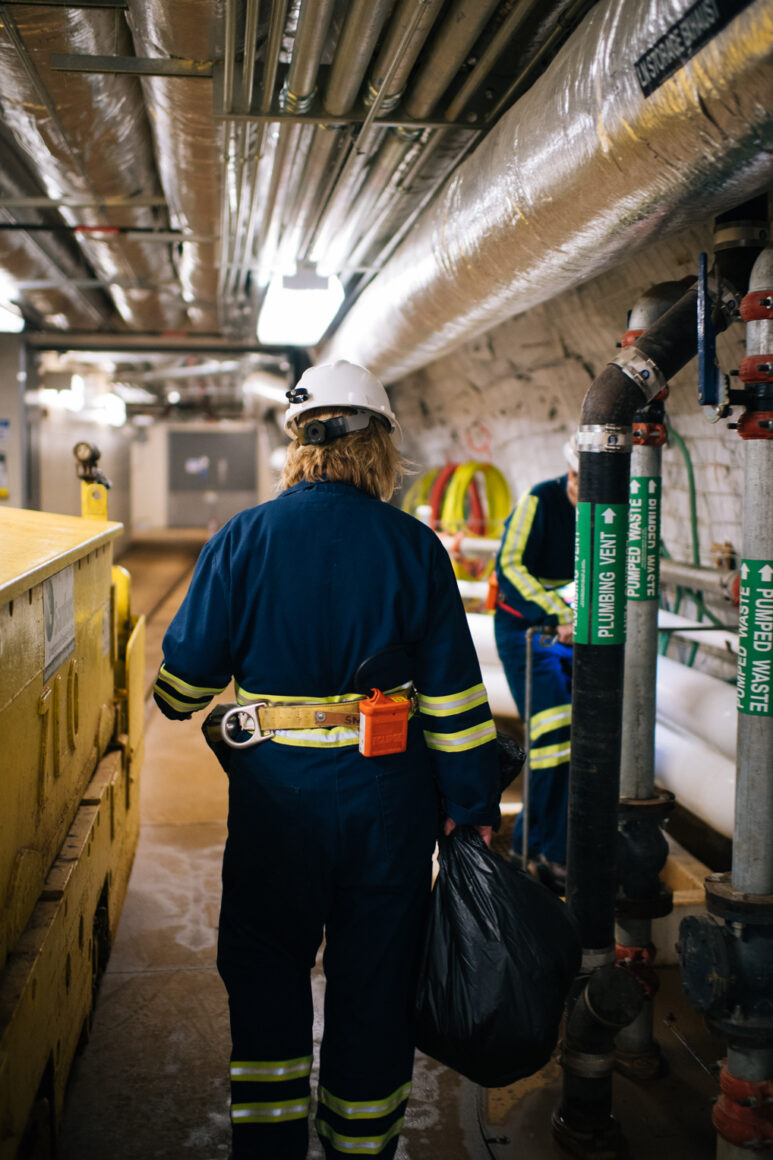
They explained that we had to enter the “cart wash” to change out of our now “dirty” PPE. This is to protect the experiments from any dirt we could carry in with us.
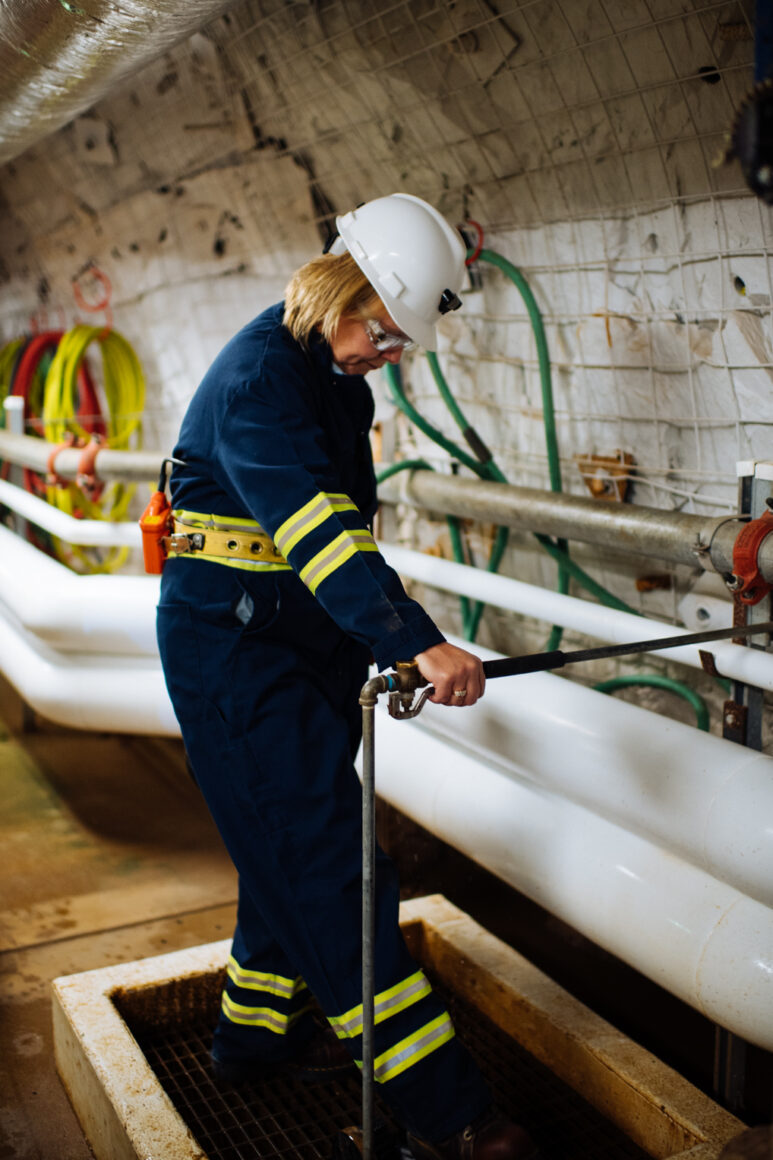
4850 Davis Campus Custodian Robyn Varland was there to greet us, and gave us instructions on removing hard hats and self-rescuers to put outside the cart wash. Inside the enclosed room, we took off coveralls, got a clean hard hat, and put on shoe covers.
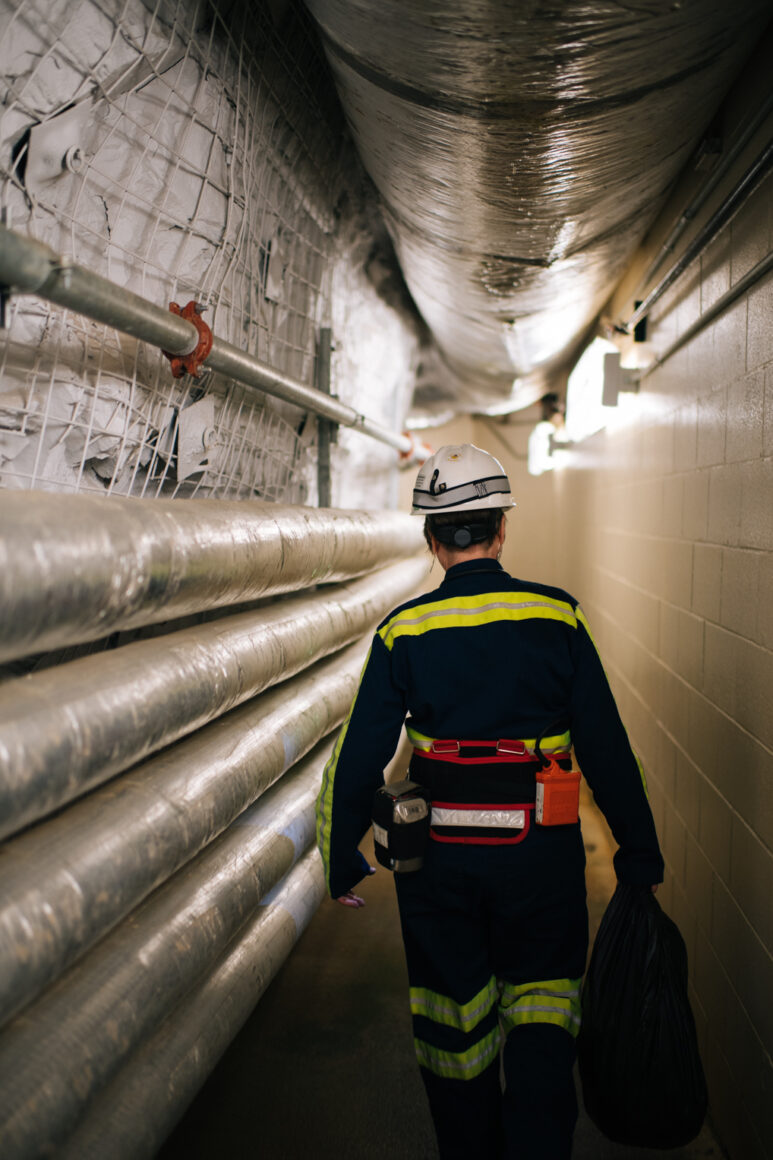
Varland cleaned our cell phones and cameras to minimize any dirt they carried. Then, everyone received a charming sticker with an animated sun that said, “Always sunny on the 4850.”
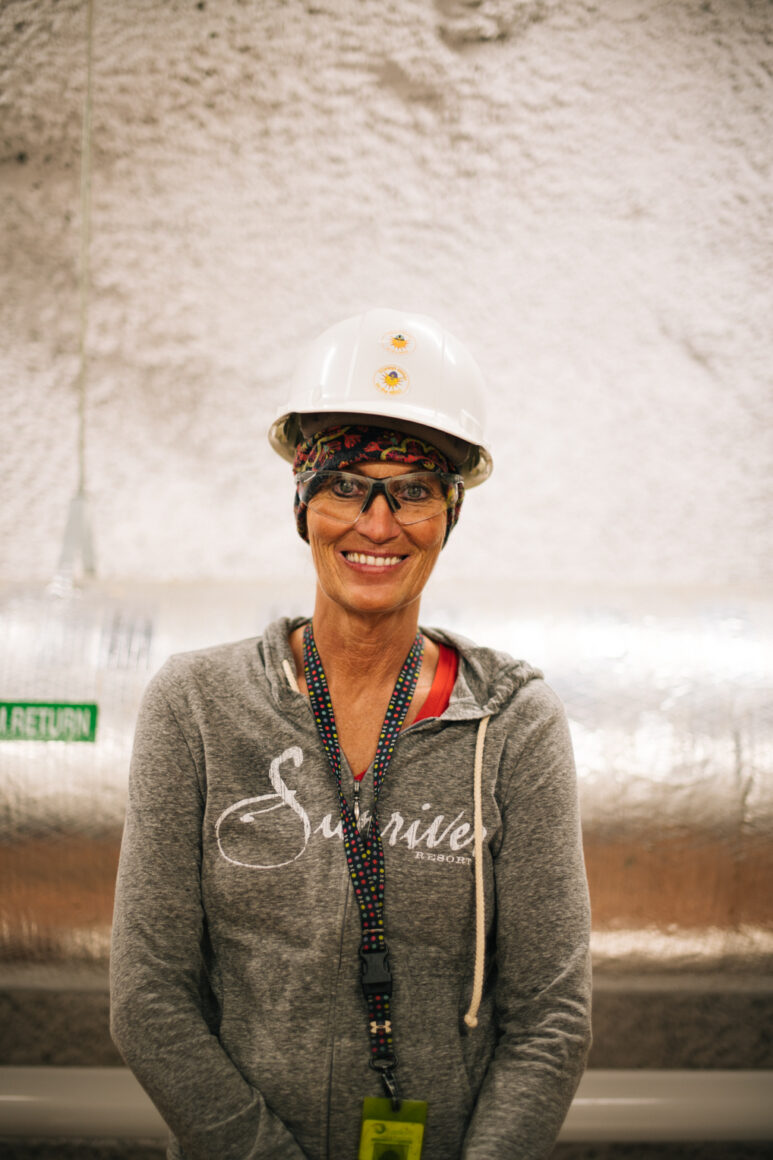
“At first, [the job] was a little overwhelming. It’s the first job in my life that has taught me safety outside of what I do,” said Varland. “It’s very big on safety, and I think I needed it. And I look at everything different because of that.”

When we asked what it’s like being in charge of ensuring things are clean and meeting people every day underground, she said, “It’s amazing, because I get to work with people from all over the world. I’m a janitor and I’m treated very well. Seriously, it’s been probably the biggest thing in my life, because I don’t like to travel, so I get to work at a really cool place in my hometown, I live a mile away, I have a wonderful job. I’m very blessed.”
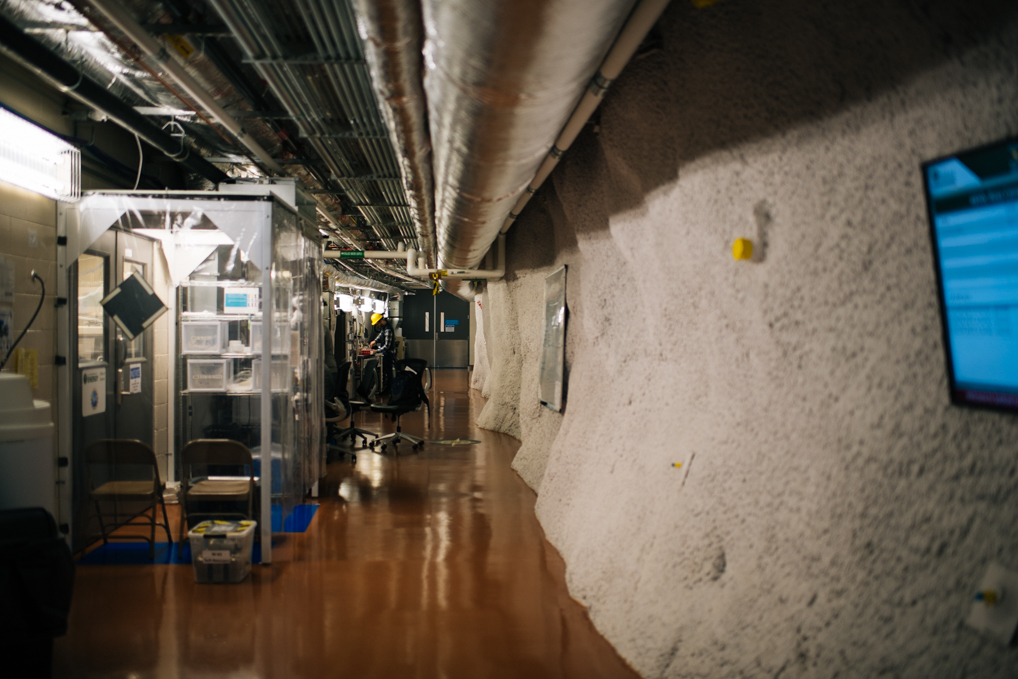
The door on the other side was opened, and we were released into the Majorana experiment section, where three employees were sitting at a long desk next to the “clean room.”
Davis Experiment
In 1969, a chemist by the name of Ray Davis began an experiment to detect neutrinos coming from the sun. For nearly three decades, Davis counted solar neutrinos on the 4850 level of the former Homestake Mine. But there was a problem. Davis consistently counted only one-third the number of neutrinos predicted by theorists, creating what came to be called the “solar neutrino problem.”
Initially, the scientific community thought the experiment must be wrong, but Davis insisted he was right. He was vindicated when two underground experiments in Canada and Japan showed that neutrinos oscillate, or change among three types, as they travel through space at nearly the speed of light. In 2002, Davis earned a share of the Nobel Prize in Physics, and things like the Davis Campus and “Ray’s Café” are named after him at Sanford Lab.
Davis Campus
The clean room houses the Majorana Demonstrator, an experiment so sensitive that even a speck of dust could render it unusable.
Scientists enter the clean room through an ante-chamber surrounded by heavy plastic, where they “garb up” to avoid contamination.
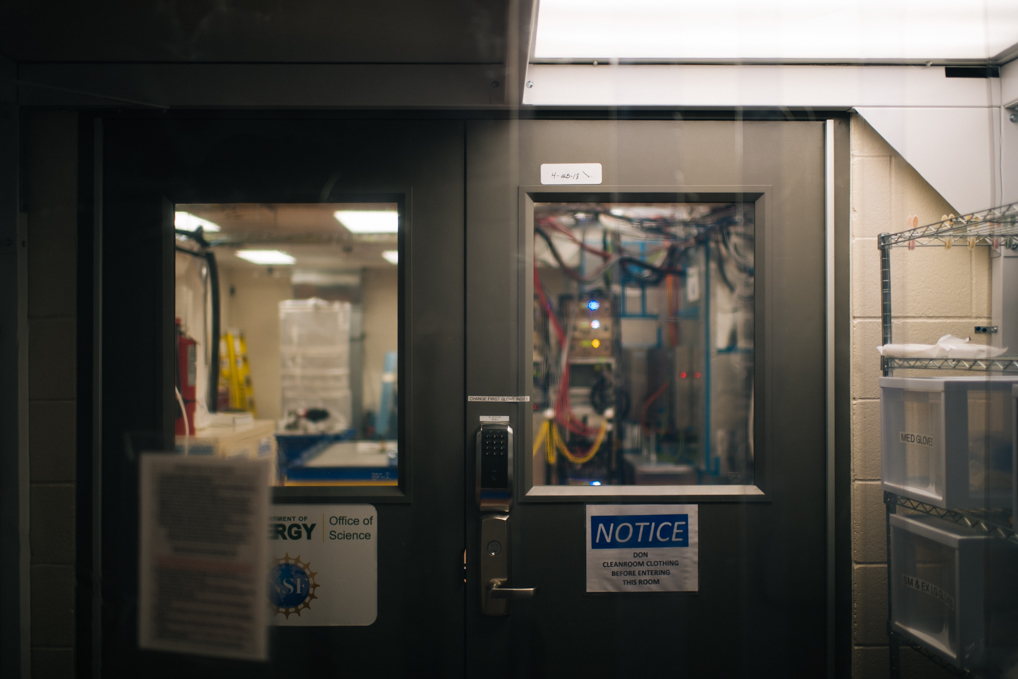
We met Cabot-Ann Christofferson, the chemist with the project, who also teaches at the South Dakota School of Mines & Technology in the chemistry department. One of the first questions we asked was, “What is like having to go through so many steps for work, like the clean room?”
“It depends on how good you are at it or how sleepy you are, too,” she laughed.
Christofferson continued, “I compare it to a home project. If you’re plumbing, for example, how many times do you end up going to a store? Three times? Well, it takes three times as long to do anything, because you can’t just go out and grab a part, you have to plan and coordinate what’s coming down, if it can go into the experiment, if it’s clean enough to go into the experiment in terms of how it was manufactured, and how it can be cleaned.”
“An interesting day? You get to get dressed up to come underground, and we get to dress up to go into a lab, so a lot of changing of clothes and coordination.” – Christofferson
Anything staff brings down has to be bagged, and they don’t allow certain products because they shed potential radioactivity (human themselves are radioactive).
Both LZ and Majorana require the absolute minimum of “background interference,” and the 4850 level is the best “quiet” they could hope for, meaning the least interference from the outside.
“To do this type of study, there’s too much noise on the surface, so you have to come a mile underground to isolate yourself from the cosmic radiation, or ‘noise,’ and then you also have noise from the rock environment, material, yourselves – we all make noise,” said Christofferson. “You’re isolating that experiment for all that could overshadow what we’re looking at.”
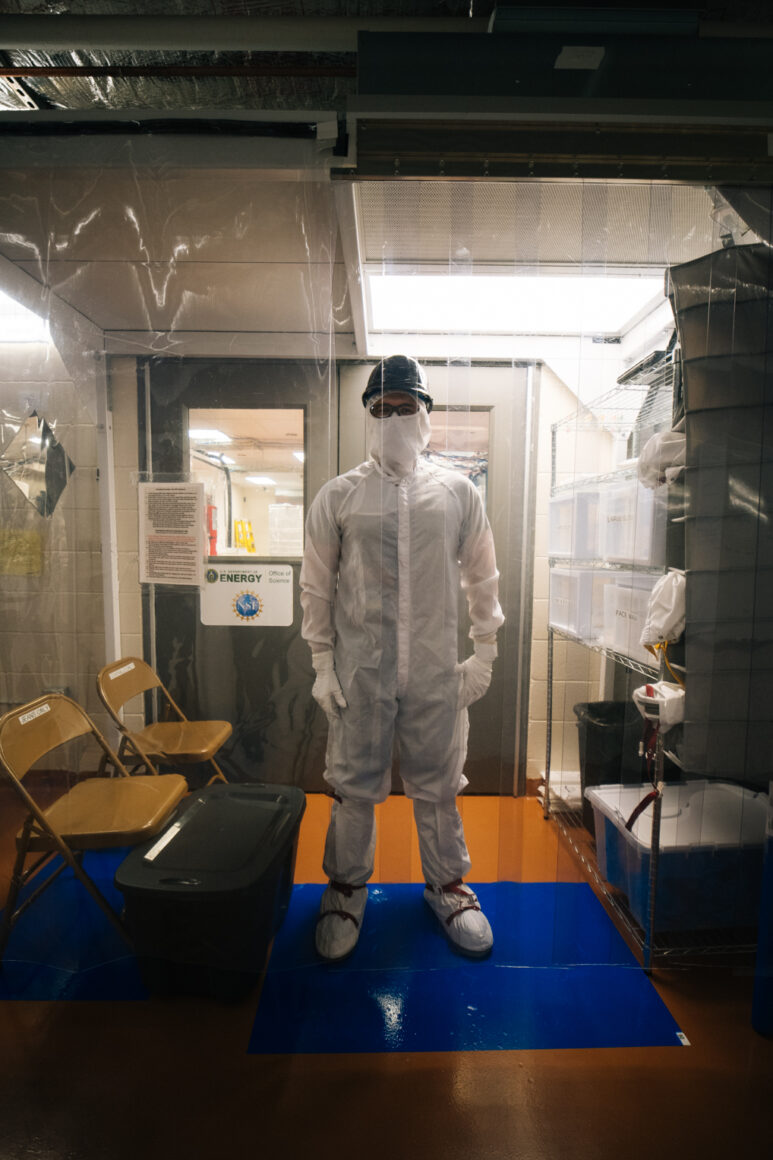
That’s not to say they’re 100 percent safe down below, as they both created additional “shields” around the experiments. Majorana built a six-layered shield that includes copper and lead, while LZ uses 72,000 gallons of ultrapure water.
“For as much of the equipment as you see down here, this is the extremes,” said Christofferson. “We’re one of several neutrinoless beta-decay experiments in the world, but we did go to the extremes to keep our experiment clean, and it paid off. We have the lowest backgrounds in the world for this type of detection.”
The team started experiment construction in 2011, and they completed construction and began collecting data April of 2016.
“We’re different from the dark matter experiment, where everything was built on the surface, then brought underground, and then put it together and they turned on the switch,” said Christofferson. “We had to bring everything underground, grow our own copper, and build the experiment.”

Walter chimed in about the skill level that comes with this type of job.
“They have to find the cleanest materials possible, and then they have to get that material,” said Walter. “And the scientists have to not just be physicists, but they often have to be engineers. The Majorana experiment is a classic example of scientists building their own experiments.”
Neutrinos are difficult to really explain, as we can’t feel them or see them, but they are all around us. Unraveling the mysteries of neutrinos with this experiment could tell the world why matter triumphed over antimatter, and why the universe exists.
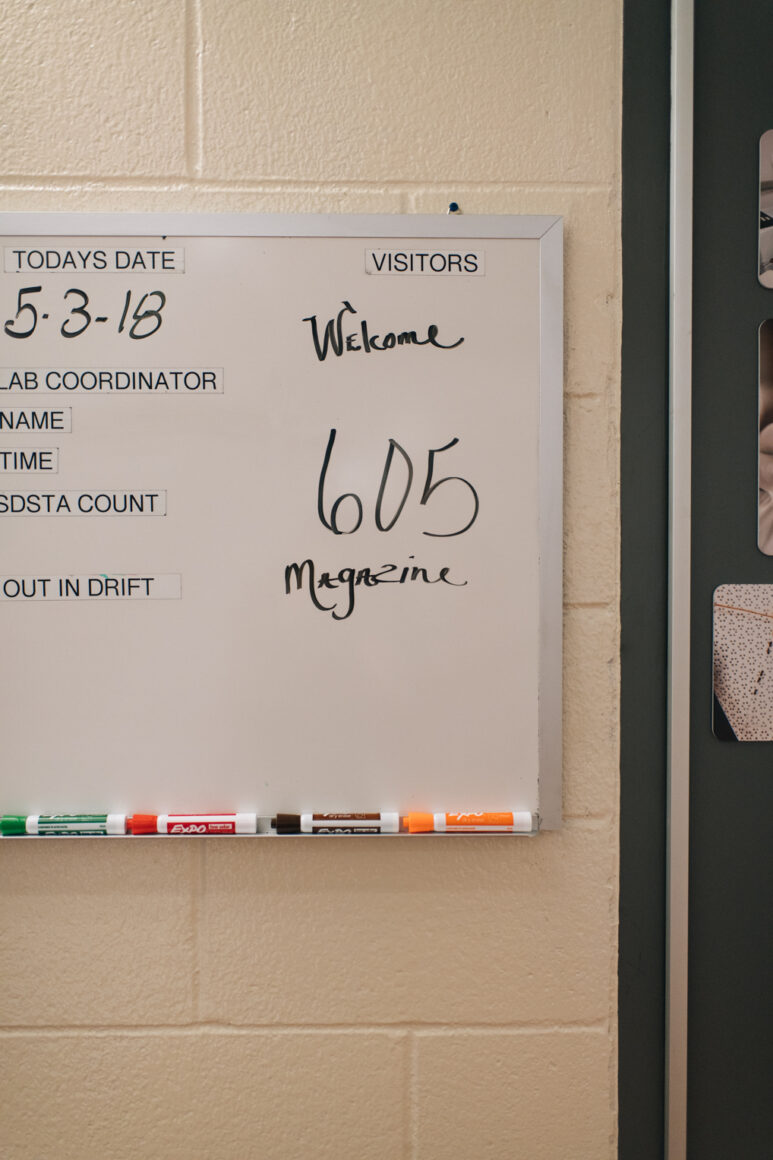
“Working here is very busy, very exciting,” said Christofferson. “We’re doing something brand new. This is basic science, but at the cutting edge, so a lot of new inventions and new uses come out of this. Plus you’re training the next generation of scientists and bringing national lab scientists here to South Dakota.”
The team has already started planning the next generation experiment with a neutrinoless beta-decay experiment located in Europe. The two will come together to build a much bigger experiment that could dramatically improve the chance of finding this decay.
“The bigger [the experiments] are, the more detection you have,” said Christofferson. “So we’re slated here until 2020-2021, then we’ll transition into the bigger experiment.”
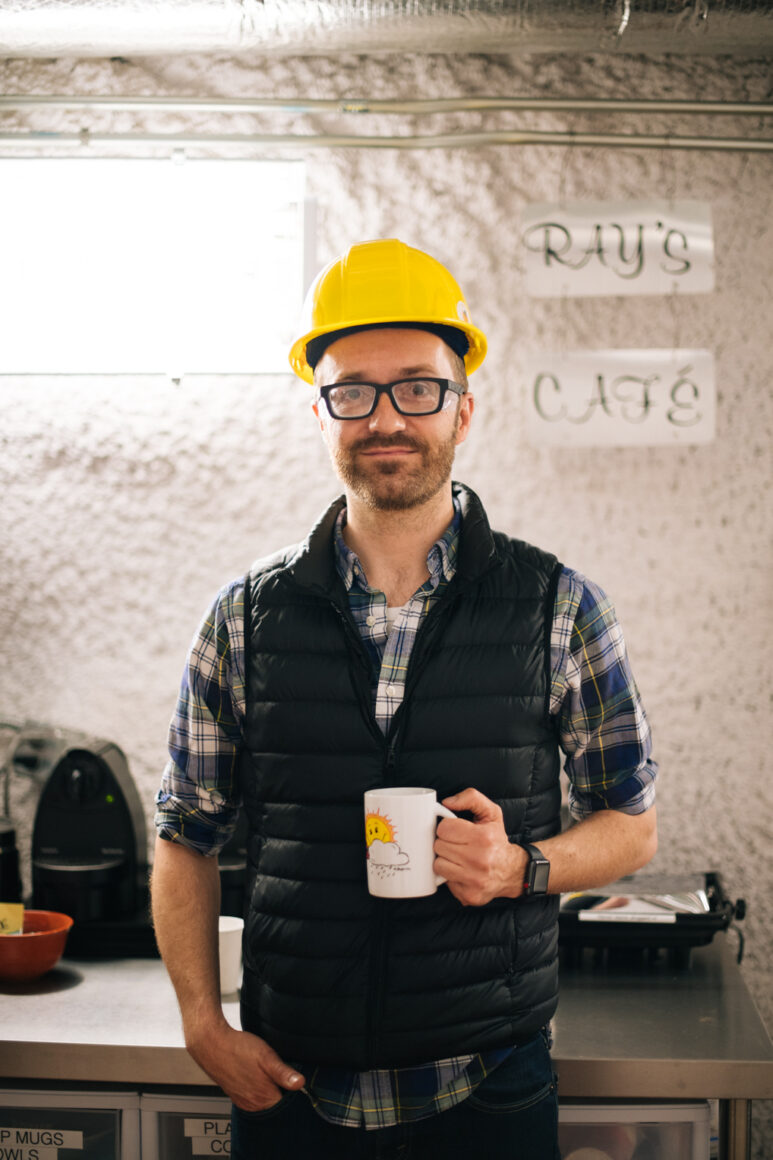
605 bid them adieu and walked down towards LZ, where we came across Markus Horn, Sanford Lab research scientist and a scientist with the LZ dark matter experiment, at Ray’s Café (a table with coffee goods, named after Nobel Prize winner Ray Davis).
We asked what they have been up to on that side of the hallway.
“The idea is we’re trying to find dark matter in space by building a very sensitive detector where we hopefully can record a dark matter particle,” he said.
Horn continued, “I’ve been doing this for a very long time. I did my PhD in the French Italian Alps underground, where you drive in instead of going down. Then I worked on an experiment in a mine in north England. And then I moved to LUX, the first generation dark matter experiment at Sanford Lab, and came here.”
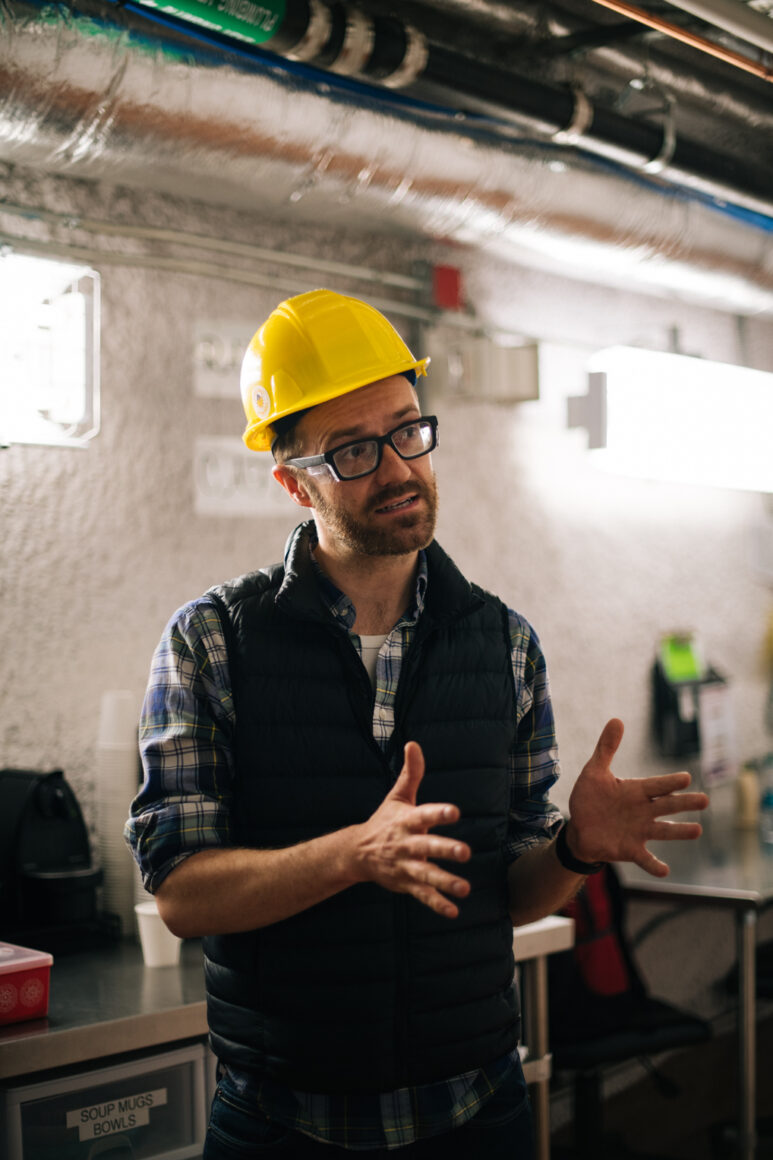
In July 2012, the LUX dark matter detector moved into the Davis Campus, and in 2013 researchers announced they had the most sensitive dark matter detector in the world.
Researchers at Sanford Lab believe the leading candidate for a dark matter particle is a WIMP, or Weakly Interacting Massive Particle. If WIMPs exist, billions of them pass through your body, the earth, and everything on it every second. But because WIMPs interact so weakly with ordinary matter, their ghostly journey goes entirely unnoticed.
No dark matter has been found yet, but they are not stopping and aren’t disappointed.
That’s because they’re moving on with the next generation dark matter detector, LUX-Zeplin (LZ), which is expected to be 100 times more sensitive.
For this huge change, the team is currently outfitting the room by doing things like making doors wider for equipment, taking out walls, and creating a room specifically for storing xenon.
“[Dark matter] is a particle that is all over the place, it’s like a halo over the galaxy. It’s really heavy, but it isn’t really interact, so that’s why we’re calling it a Weakly Interacting Massive Particle [WIMP].” -Horn
“With over 200 bottles [of xenon] now, you need a whole room for it,” said Horn.
They also must be very careful with exposure.
“When we’re assembling the detector, we’re very keen on trying to limit exposure of any surface to normal air because it not only has dust, but radon,” said Horn.
The radon levels, while safe for humans, can create serious problems for sensitive experiments by creating additional noise.
The LUX detector was installed in a 71,600-gallon tank of pure, deionized water, that further protects the experiment from extraneous “noise,” such as naturally occurring radiation from the surrounding rock. The LZ experiment will fit in the same tank.
Along with being busy underground, Horn is finally excited to make roots in the area since moving from London a few years ago.
He said, “I just bought a house and got a dog and finally have a South Dakota license.”
Horn says he also feels grateful for having a facility specifically designed for their work.
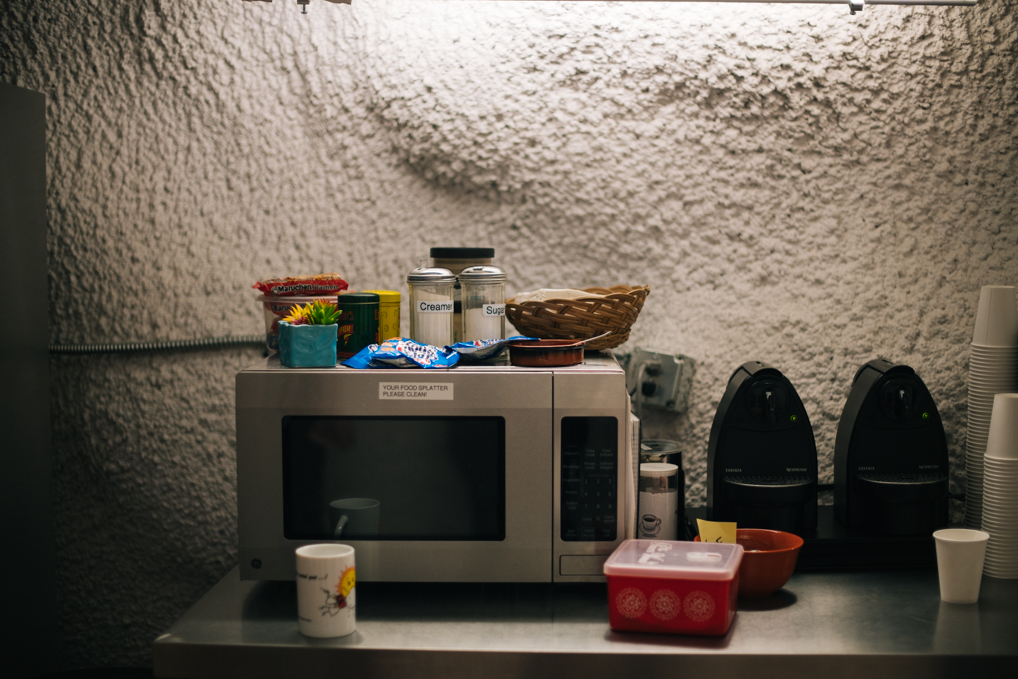
“I like that it’s purpose-built, meaning we’re the prime customer, so it’s all about the science,” he said. “Other times [with my work history], it’s been something like a highway tunnel and getting a little corner so traffic can continue, or being in an active mine, meaning the mining business is driving everything that’s happening there and you’re allowed on-site as a ‘side gig,’ so to speak.”
Leaving Horn at Ray’s Café with his cup of coffee, we headed back through the cart wash and reversed the process by taking off our shoe covers and getting back into our PPE for a ride to the other side of the facility.
What is Dark Matter?
Scientists don’t know much about dark matter yet, which is a remarkable thing because it makes up 80-85 percent of all the matter in the entire universe. They’ve never been able to directly detect dark matter in any form, but they know it exists indirectly through its effects on the universe.
What is a Neutrino?
Neutrinos are among the most abundant and least understood of all particles that make up the universe. Because they have no charge, they interact only through the weak subatomic force and gravity. They pass right through matter- not even millions of miles of lead can stop them. These near-massless particles were born soon after the birth of the universe and are constantly produced in nuclear power plants, particle accelerators, general atmospheric phenomena, and during the births, collisions, and deaths of stars.
Education
K-12 STEM Education
Based on South Dakota’s science standards, their education specialists work to create and advance innovative educational programming at the local, state, and national levels.
Sanford Lab’s commitment to education goes back to its earliest years when the state of South Dakota and philanthropist T. Denny Sanford teamed up to develop their vision for an education program that would inspire K-12 students across the state. Since 2008, thousands of students have been reached.
College Opportunities
Through PhD programs and through things like the Davis-Bahcall Scholars Program, students have unique opportunities for furthering their education.
Taking A Ride
Better than a ride at Disney World, we boarded the car, with lead infrastructure technician Derek Lucero as our driver. He not only helps take people to places like the Ross Campus, which we were heading to, but also helped rebuild the shaft, and is one of a few who help in case of an emergency.
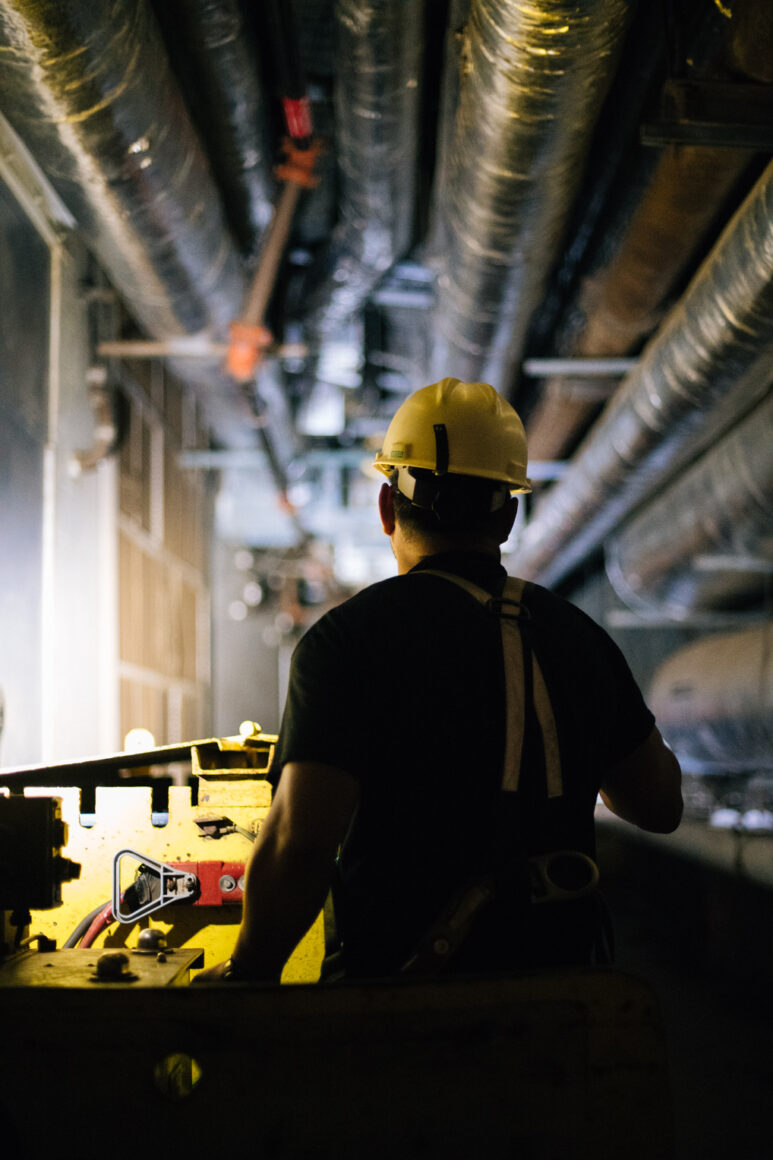
“I’ve been here going on eight years now… We were responsible for rebuilding the shaft,” he continued. “So far we’ve made it down to the 5,000-foot level.”
Lucero is also a member of the Emergency Response Team, a highly skilled group of people who are trained to rescue people in emergency situations.

Walter mentioned, “If we’re stuck down here, they’re the ones who have to get us out. Or if someone gets sick. We have to first contact the hoist operators who then will contact emergency personnel. We’re very fortunate to have this team.”
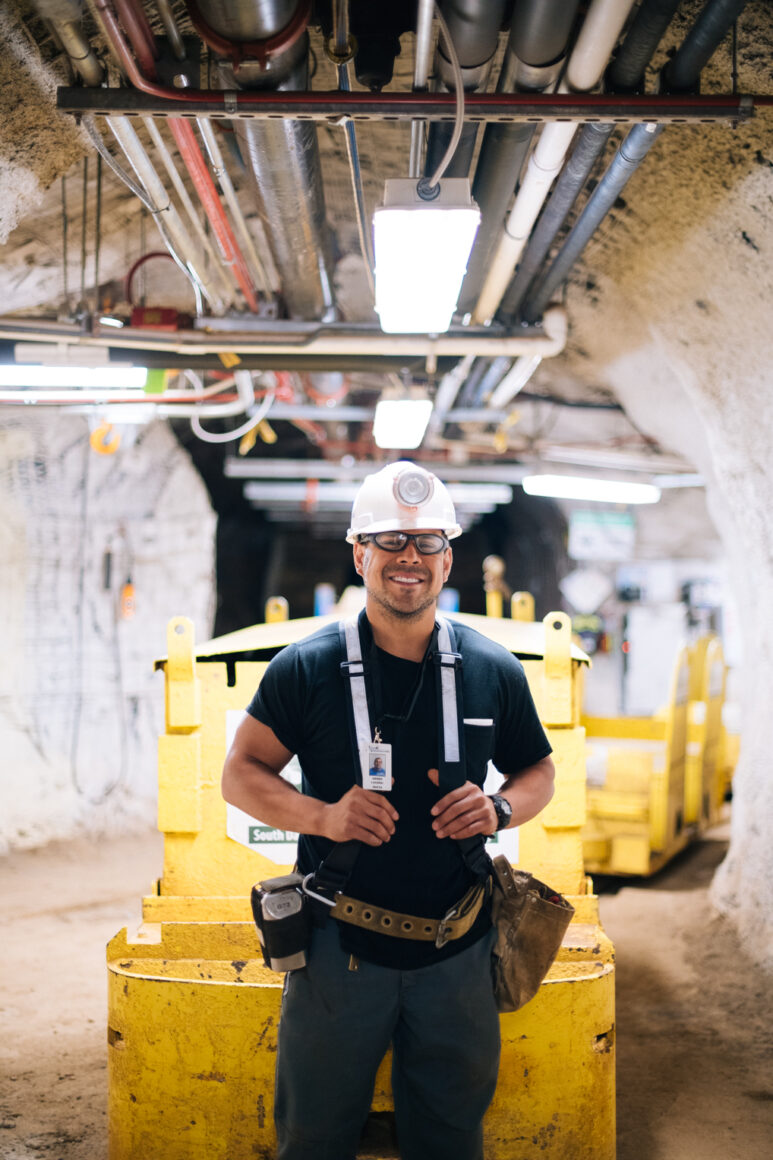
When we asked him how he liked working underground, he mentioned he wasn’t used to anything else.
He then added with a smile, “Working underground is different. The weather is consistent.”
The Numbers
370 miles
Underground footprint.
223 acres
Surface footprint.
4,850
Feet below the surface.
27,870
Drill holes throughout the facility.
50 feet
The length of the CASPAR accelerator.
-160 F
Temperature to turn Xenon to liquid.
100 TRILLION
The number of neutrinos that pass through you every second.
3
Types of neutrinos.
10 metric tons
Amount of xenon in the second generation experiment.
Ross Campus
Walter introduced us to CASPAR at the Ross Campus, the compact accelerator system for performing astrophysical research. She explained that scientists with this experiment are trying to understand how the nuclear burning inside of a collapsing star produces all of the elements that are heavier than iron, like carbon, nitrogen, iron, and calcium, all of which make up life on earth.
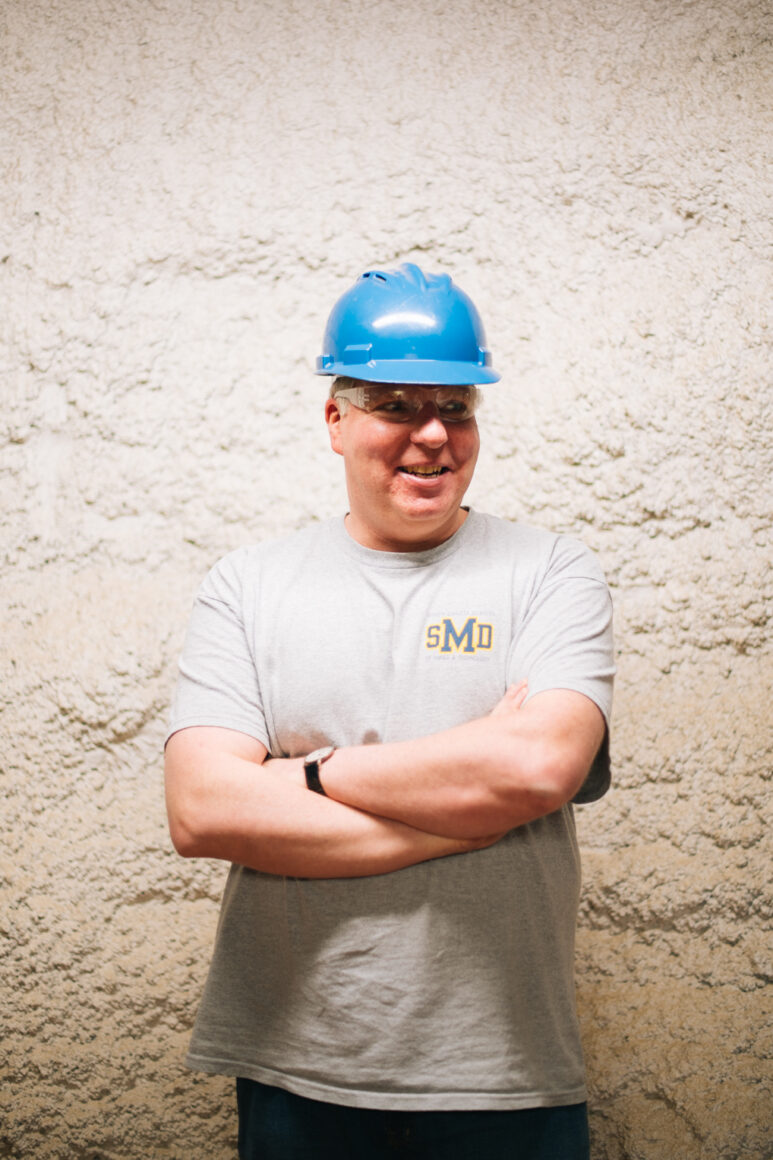
We met our host, Frank Strieder, principal investigator for the experiment.
CASPAR is one of two underground accelerators in the world, and Strieder has a history of almost 25 years working with them.
“These nuclear reactions produce the energy that drive the sun,” said Strieder. “They create elements that surround the elements we’re made of.”
He also mentioned the pure density of a star.
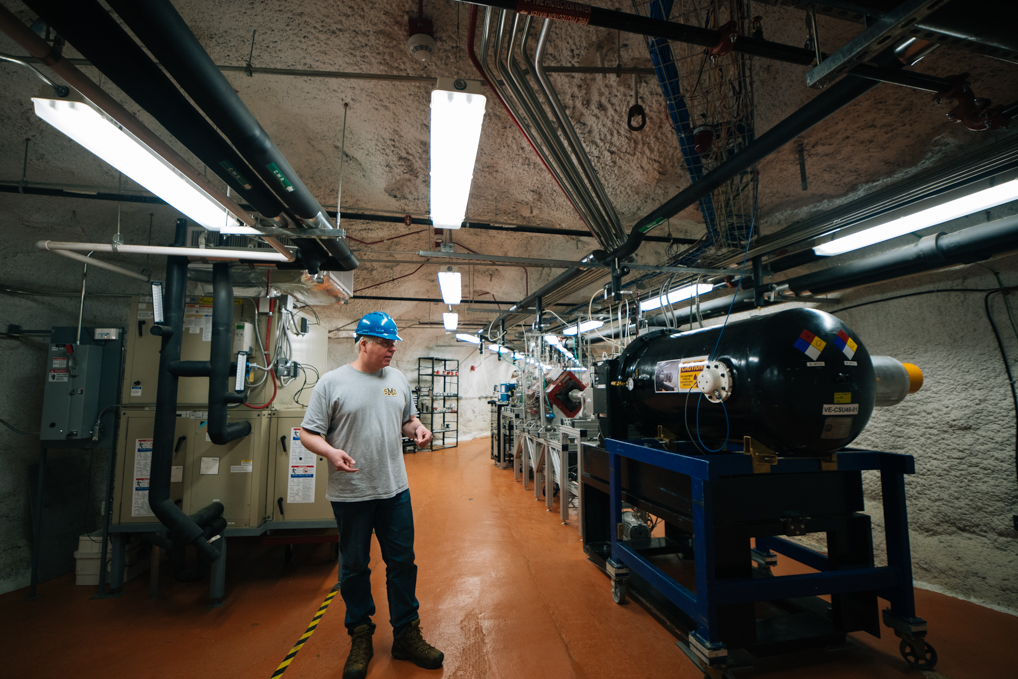
“A very little piece of a star you could not carry in your hand,” he said.
Strieder says they too are working underground to hide their experiment from the cosmic rays that continuously endanger their detectors.
CASPAR’s goal is to mimic the nuclear reactions that happen in stars in hopes to help complete the picture of how the elements of the universe are built.
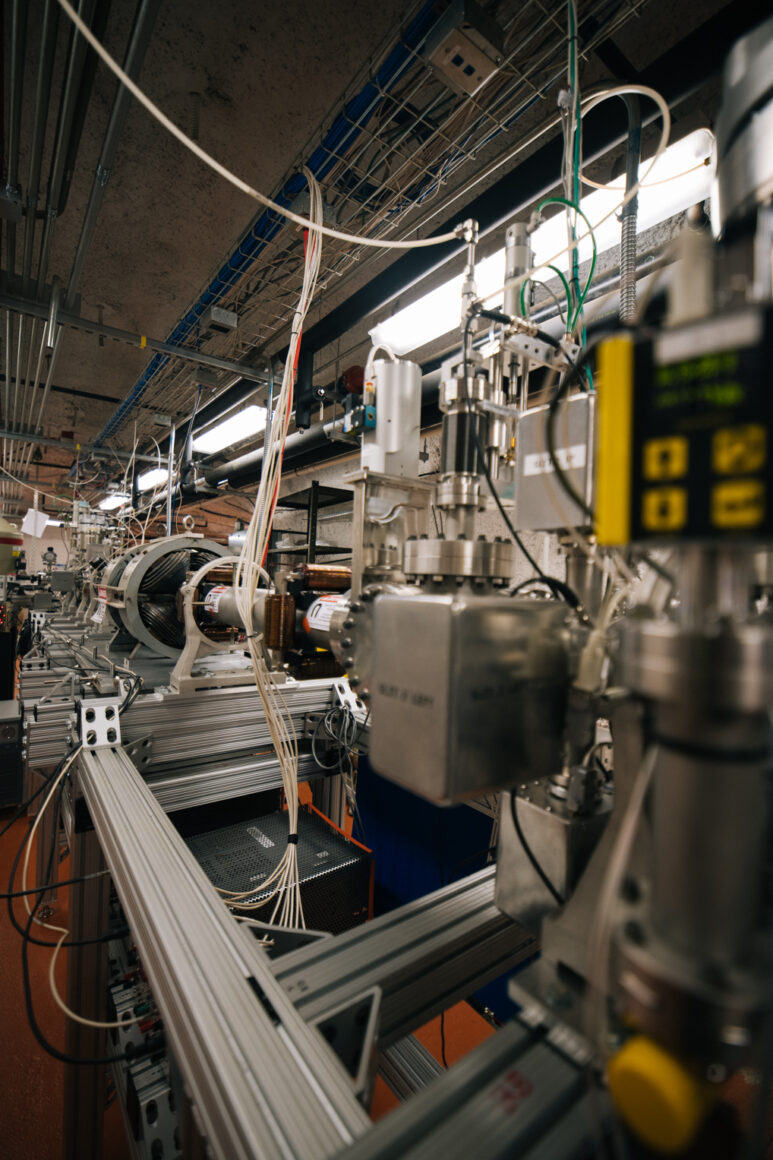
Strieder has a history of mines, and his grandfather worked in a mine back in Germany.
“I always tell people I’m from a mining region as well,” he said. “My area of Germany was coal mining. They closed when I was a kid, but I played in the yard as a child at a mine, so coming here was like coming back to my roots.”
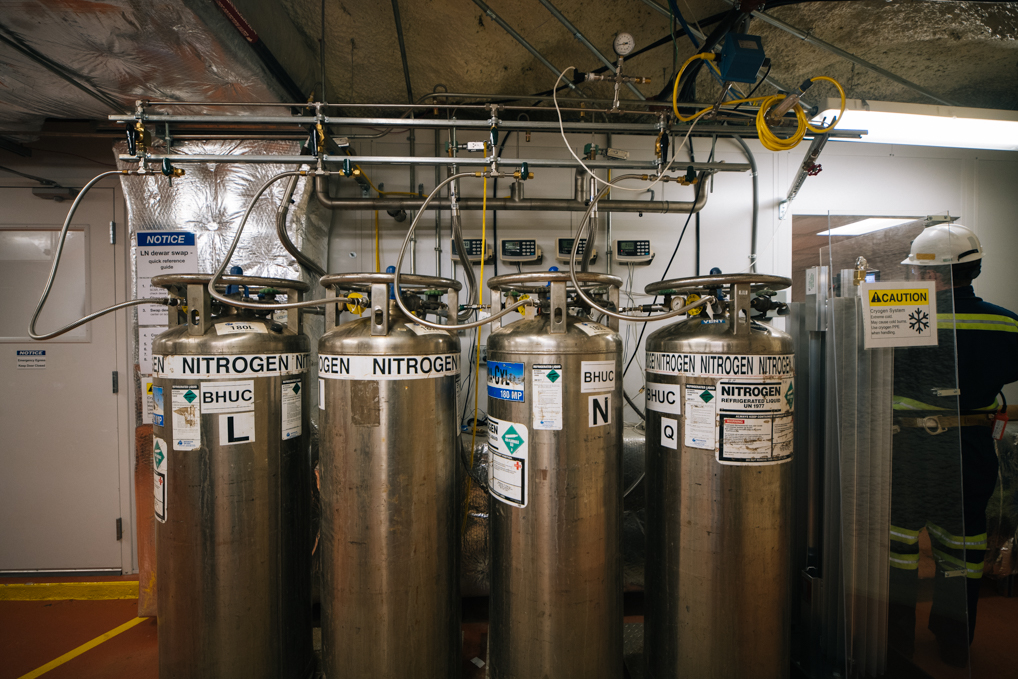
Strieder now lives in Rapid City and drives 45 minutes to and from work every day.
“You’re here and you have to go down with the safety equipment on,” he said. “It’s always some effort to work underground. You don’t just go to your lab next door and do your experiment.”
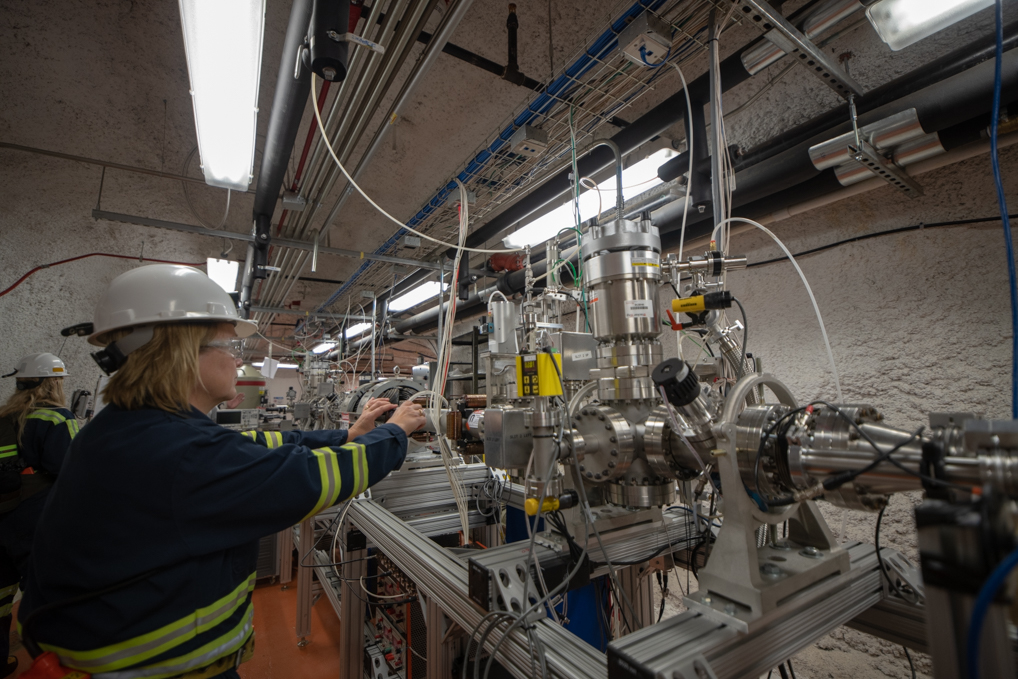
After looking up close at the accelerator and thanking Strieder for his time, we hopped back on the car and headed back in the dark tunnels to make it in time for the Yates Shaft.
Current Experiments
Here is a look at the experiments 605 encountered
CASPAR
Compact Accelerator System For Performing Astrophysical Research
Looking to mimic processes in stars that produce heavier elements like carbon and calcium.
MAJORANA DEMONSTRATOR PROJECT
Looking for a rare form of radioactive decay called neutrinoless double-beta decay, which could tell help better understand the matter/anti-matter imbalance in the universe (and why we exist at all).
LZ
Lux-Zeplin
Looking for dark matter particles called WIMPs (weakly interacting massive particles).
Exit
We returned to the Davis Campus to await the 11:45 a.m. cage. Over 30 people squeezed in this round.
“I think this might be the fullest we’ve ever had it,” said Walter.
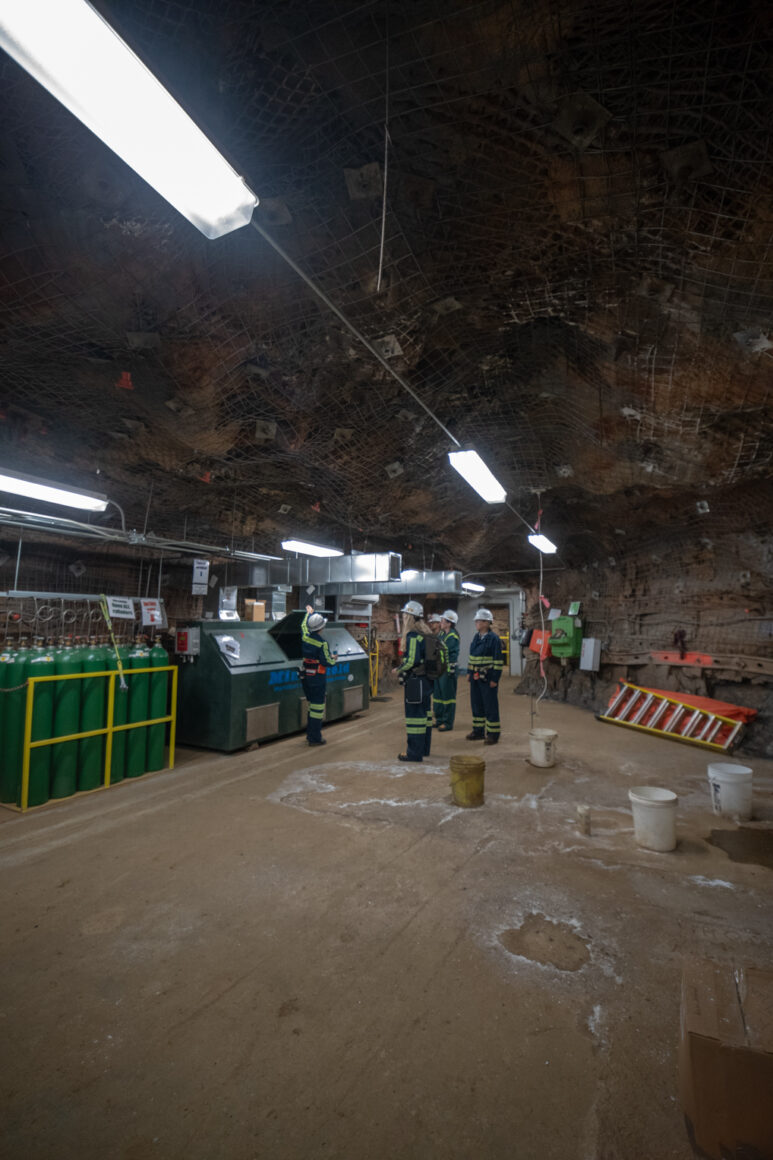
Twelve minutes later (and a lot more shoulder rubbing), we arrived at the surface and brassed out. Walter took us briefly to the hoist room, which contains the machines that move the cages up and down the shaft. The hoists are remnants of Homestake’s early years and have been in place since 1939.
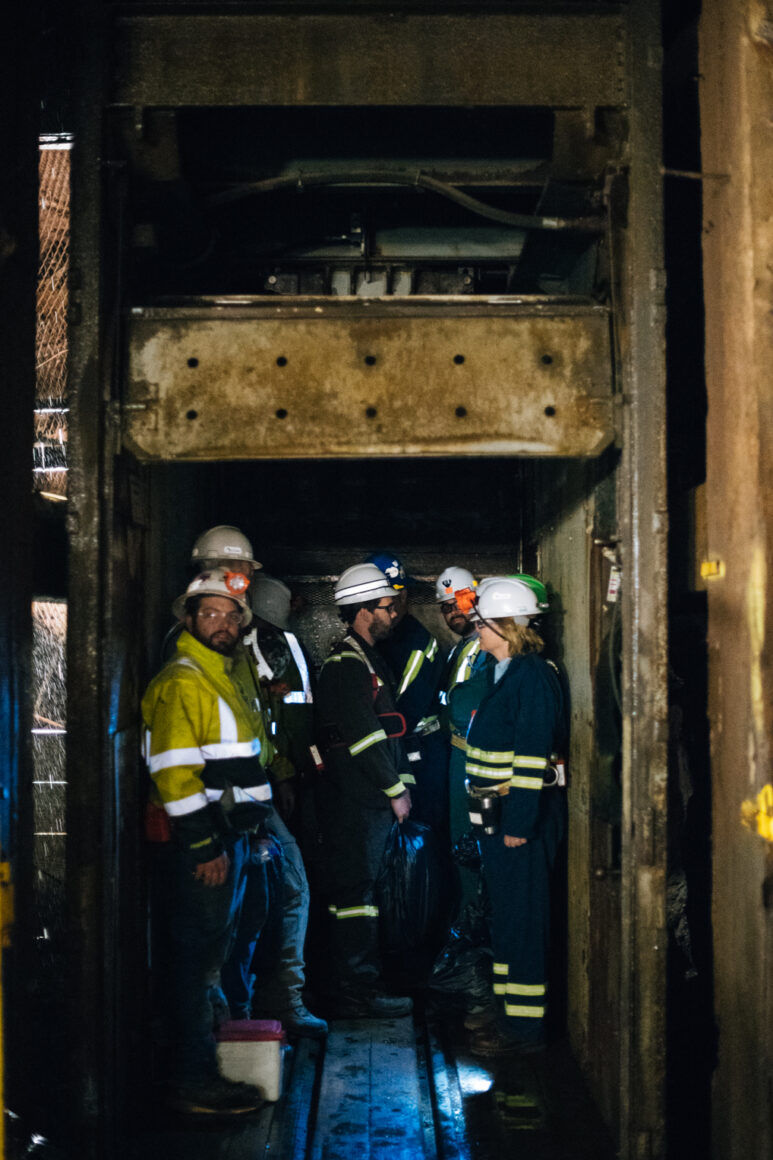
Sadly, it was time to return our gear.
End
Reflecting on what just happened, it seemed like a blur.
“We’re curious about what’s around us and what makes our universe.”- Walter
“These things that they developed in order to do the science in many ways could change the world, and it’s already changing how we use technology,” said Walter.
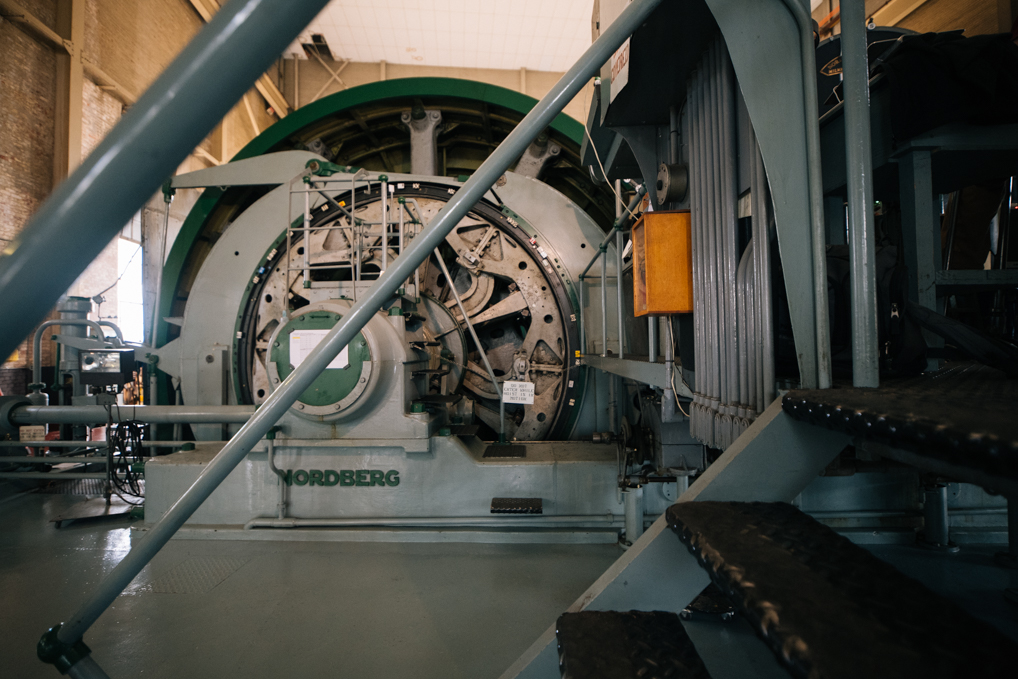
While so many of the experiments don’t have answers yet, and so many are hard to comprehend as to why researchers are working on them, Walter left off, “Why do we do basic research? Because we need to learn. But the things that come out of basic research are amazing and are changing our lives every single day.”
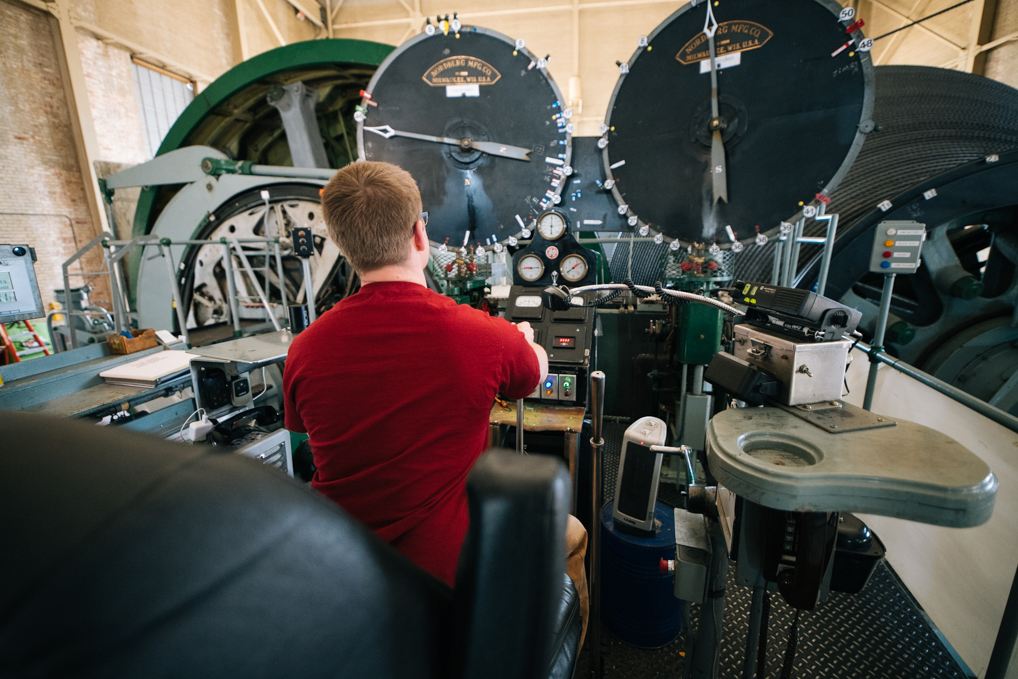
While not everyone is able to go underground, patrons can visit the Sanford Lab Homestake Visitor Center for tours, exhibits, and visitor information about the Sanford Lab, Homestake, and Lead.
For more information, visit sanfordlab.org.


